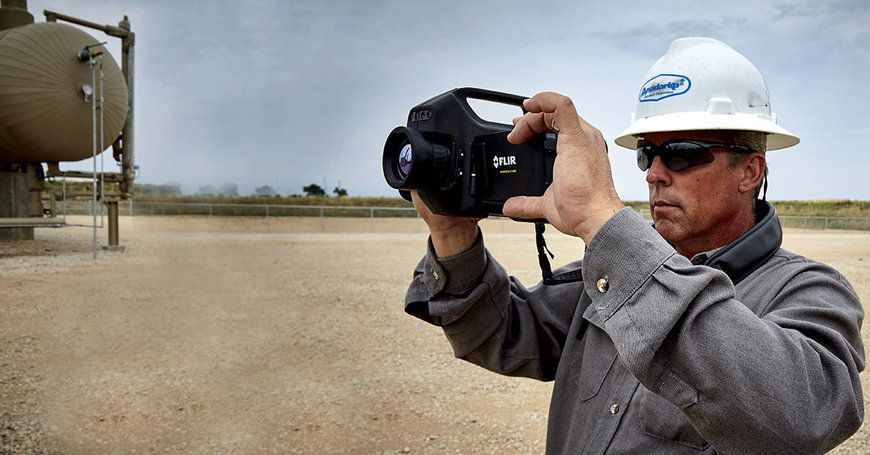
Gas leakage is a significant issue facing the oil and gas industry. The problem results from faulty installation, holes, wear or tear, etc. The leaks cause safety concerns and deprive your organization of profits. Also, the emissions will increase global warming and cause compliance issues.
Therefore, you must invest in modern technologies to detect leaks and conduct repairs. One of the top and most popular technology is the optical gas imaging (OGI) camera. The tool helps in the detection of gases and pinpoints the source of the leaks. And that’s not all; you can get more from your OGI camera by applying specific expert tips.
Here are the tips to get the most out of your optical gas imaging camera
- Know the application and your needs
An optical gas imaging camera is an essential infrared gas detection tool. However, you’ll need different cameras for different applications. The tip is understanding the type of gas you’re dealing with and matching it with the devices. Such a camera will be ideal for detecting gasses in your organization.
- Consider the environment
The success of your optical gas imaging camera depends on the environmental condition. If you have a more significant background energy differential, it will be easier for your camera to visualize the gas leaks and identify the source.
You’ll need a reflective surface in the background for your OIG camera. However, the environment will be challenging when looking at components high up or pinpointing the camera at the sky. Additionally, it would help if you considered rain and strong winds. That is because rain can make detection difficult, while wind will enhance the visualization of the gas because it makes it move.
- Utilize the Features of the OGI camera
You might be dealing with a small concentration of gases which is difficult to see even with an OGI camera. Fortunately, the modern OGI camera contains numerous features, such as automatic GPS tagging and image enhancement. The tip is to use all the parts to optimize your detection practices. You can use high sensitivity mode to enhance the image to see the small gas concentrations. Or you can use GPS tagging to ensure your crew make repairs on the appropriate spots.
- Consider the temperature
You’ll find numerous OGI cameras that are temperature-calibrated. Such a camera is beneficial as it will be a dual-use system. You can use it for industrial maintenance inspections as they can measure and record temperature across the scene. Also, it will help you save the data to JPEG or video and detect hot spots or electrical problems in high and low-voltage electrical installations or mechanical installations. The camera will help you to identify installation failures in pipework, ovens, etc.
The thermographic aspect will also help you improve the visual contrast between a gas cloud and the background scene. However, your gas has no visual representation, so you’ll need to create a radiant contrast between the cloud and the background. The cloud will not reflect radiation, but you can make it more visible by enhancing the temperature difference between it and the background.
- Use it qualitatively
An OGI camera alone cannot determine the type or amount of escaping through a leak. That’s due to environmental variants and the background energy differential and variations. Pairing the OGI camera with companion technologies would be best to avoid the challenge. That way, depending on your industry, you can measure leak rates or volumetric leak rates for hydrocarbons or other types.
- Track the return-on-investment
Buying an OGI camera can be a considerable investment. But its benefits and use can pay for itself quickly and increase your profit margins. You’ll be able to perform accurate surveys faster than traditional leak detection technologies. Also, you can detect small and low-concentration leaks.
Further, an OGI camera is a non-contact approach you can apply during normal operations, minimizing downtime. The camera will help you detect the leaks early and make repairs, saving you on fines and enabling you to retain gases.
- Acquire the proper training
An OGI camera offers numerous benefits, including higher profits and safety. However, the benefits you’ll get from the tool depend on your expertise. If you know how to use it, you’ll be able to identify leaks promptly and accurately. But if you don’t have the right experience, you’ll have trouble and might have the wrong data. So learn from experts about your specific OGI camera and how to use all the features.
- Utilize the camera to keep safe
An OGI camera is an essential tool that can help you keep safe on your premises. It is a quick, non-contact method of detecting leaks in all spaces, including hazardous and hard-to-reach areas. It will help you see small and large leaks from meters away to a hundred meters away. Also, the camera has a high-sensitivity mode feature that improves the detection of low-concentration leaks.
You can detect gas emissions from a safe distance, removing health and hazard concerns. You can start scanning the work area outside to establish if there are significant leaks. Advance closer to the premises as you conduct specific scans. But remember to wear safety gear and store the camera carefully to avoid damage. Also, work regular camera maintenance practices to ensure its continuous functionality.
- Work with permits
A modern OGI camera will help you see leaks from a safe zone, including outside your facility. However, an OGI camera is not Zone 1 ATEX certified. As such, you must apply for a ‘hot work permit’ or use it under a permit work scheme for Zone 1 work.
Also, you’ll need a permit when using an OGI camera in Zone 2. But there is an exception for the FLIR GF×320. This is a hazardous locations compliant, certified zone 2-compliant OGI camera that detects hydrocarbons. Various companies allow camera usage in Zone 2 without a hot work permit.
- Consider future regulations
Gas emission is a significant factor contributing to global warming and healthy complications. As such, industrial gas emissions are a sector that faces heavy and changing regulations. The OGI cameras are subject to the rules, and you should ensure you comply. The tip is acquiring the right tools to meet the rules and avoid fines or penalties.
Conclusion
An OGI camera is an essential and must-have tool. It allows you to detect leaks and identify their sources. The information helps you repair the spots to avoid health issues or penalties. But that’s not all: the above tips will help you get more from your optical gas imaging camera.




More Stories
AI & Machine Learning: Dedicated Servers with GPUs – Powering the Future
Methods to avoid phishing scams
Anonymous note-taking – Tips for maintaining your privacy